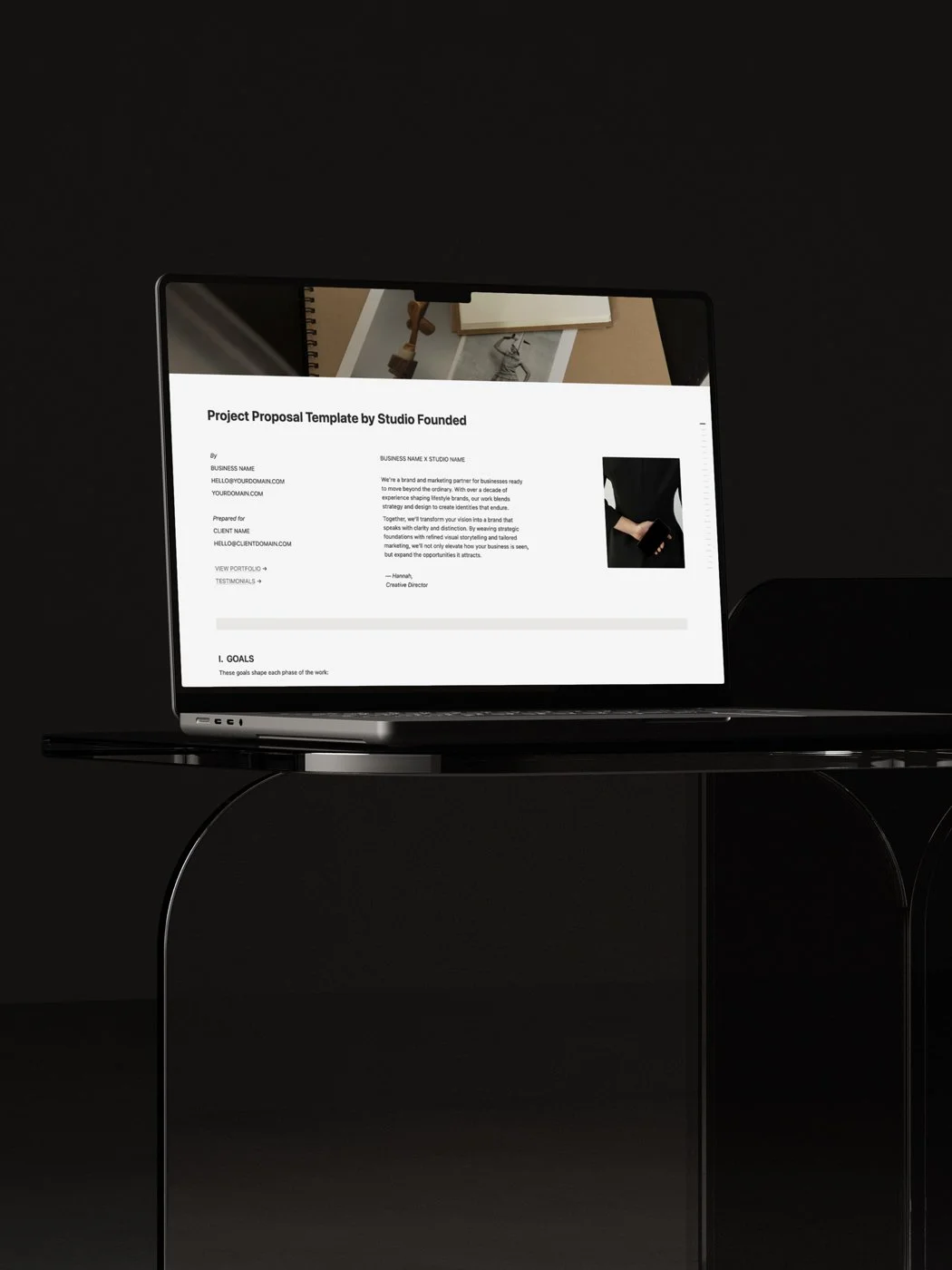Finding Your Brand Voice: From Personality to Point of View
Brand Materials is a ten-part series for founders exploring the foundations of brand strategy, from purpose and positioning to voice, personality, and emotional connection.
Each entry is a self-guided workshop, structured to give direction while letting your ideas unfold. Think of it as a companion to your branding process: a place to ask sharper questions, refine your message, and shape a brand that’s deeply compelling.
In this post, you’ll learn how to shape a brand voice and build a point of view system.
What is Brand Voice?
Voice is the personality behind your words. If you’ve ever read something and instantly known who wrote it (even before seeing the name) then you have an idea of what brand voice means.
Consider how your voice ties your communication together. Is it warm and welcoming? Bold and irreverent? Quietly confident? Curious and poetic? What does it tell readers about your brand?
Brand Voice vs. Tone
Your brand voice stays consistent, but tone changes depending on content. Think of it like how you might speak differently in a job interview than you would texting your best friend, but you’re still “you.” Your tone flexes to fit the moment.
For example:
A wellness brand might use a calm, grounding tone when writing a blog post about burnout, and a more energizing tone when announcing a new product launch.
A coaching brand might use a compassionate, open tone in their welcome emails, and a more direct, motivating tone when selling a program.
The core voice (empathetic, wise, supportive) doesn’t change. It just expresses itself in different ways depending on the message and the moment.
Why Voice Matters
Many founders treat brand voice as something to figure out down the line. But you don’t need to worry about building a detailed 30-page voice guide. Even a quick review of your voice can help you build towards more consistency and connection.
Ask yourself:
How do I naturally speak when I’m most confident and clear?
What words or phrases do I use again and again?
What tone helps my audience feel safe, seen, or inspired?
Voice as a Point of View System
Your brand voice isn’t just about tone. It about point of view. How your business makes sense of the world, how it invites others to see things the same way, how it reflects your positioning, values, and emotional intention.
Your POV System is the set of beliefs that anchor your communication. It answers questions like:
What truths about your industry do you want to name?
What are you tired of seeing done the same way?
What possibilities excite you?
What do you do differently, and why?
What ideas or norms do you subvert or disrupt?
How to Find Your Brand Voice
Here are a few steps to help you put your voice to paper:
1. Begin with your values
Your voice is an extension of your values. If compassion is your values, your voice might feel gentle and empathetic.
2. Return to your mission
Mission also helps guide your voice. A brand advocating for slow living might choose grounded, invitating language. A brand pushing for systemic change might lean into sharper, bolder language.
3. Imagine your brand as a person
If your brand walked into a room, how would it hold itself? Would it ask questions, or listen? Would it speak slowly and thoughtfully, or with quick bursts of energy? Sketch the personality, then distill it into five descriptive keywords to help guide your writing.
4. Consider your audience
Voice is relational. What kind of voice makes your ideal audience feel seen? Do they respond to intimacy and softness, or structure and certainty?
5. Scan your competition
Every industry has its clichés. If everyone else sounds professional and distant, there’s space for warmth. If your space is full of trendspeak, there’s power in restraint. Defining what’s missing gives you a chance to claim ground.
6. Use contrast to sharpen
Defining what your voice isn’t makes what it is clearer. For example:
Our voice is: grounded and authoritative, but conversational. Expertise with warmth—a guide, not a lecturer.
Our voice is not: dry, clinical, or detached. We avoid jargon and keep our words human, accessible, and easy to understand.
How to Systemize and Sustain Your Voice
You can treat your voice like a toolbox or repository. Instead of starting from scratch every time you write, build a set of resources that makes your voice easy to sustain and repeat. For example:
1. A Voice Guide
Create a reference guide for how you speak (Notion, Google Docs, or even a private folder works). Capture:
Core voice descriptors (e.g. warm, grounded, bold)
Do’s and don’ts for phrasing, structure, or tone
Reusable blocks of copy (taglines, intros, calls-to-action)
Samples of writing that you want to repeat
This helps keep you consistent, but it also helpful if you hand your content to a copywriter, VA, or collaborator.
2. An Inspiration Archive
Start keeping records of what sparks your voice:
Musings, phrases, or metaphors that surface in your everyday thinking
Ideas and observations that reveal your unique point of view
Examples of industry “norms” you want to disrupt (and your counter-takes)
Content, quotes, or even visuals that feel tonally aligned with your brand
These become the raw materials you can draw from to create fresh content.
Recap
Your brand voice is more than just how you sound. It’s about how you make your audience feel.
In this post, you’ve explored:
The difference between voice (consistent) and tone (adaptable).
How voice extends beyond adjectives into a Point of View System.
Prompts to help you shape your voice through values, mission, and audience insight.
Ways to systemize your voice into a living toolbox you can draw from.
Concluding Thoughts
Brand voice is more than a writing style. It shapes how your brand expresses its worldview, filters your content, and builds emotional continuity. When you commit to using your voice as a filter for ideas, a signal of belonging, and a vessel for your perspective, you can invite your audience into conversations that feel engaging, genuine, and purposeful.
Up Next: The Storybrand Framework
In the next post in the Brand Materials series, we’ll explore the Storybrand Framework, a storytelling method that helps clarify your brand message and position your audience the hero of your story, showing them how they fit into your brand journey.






